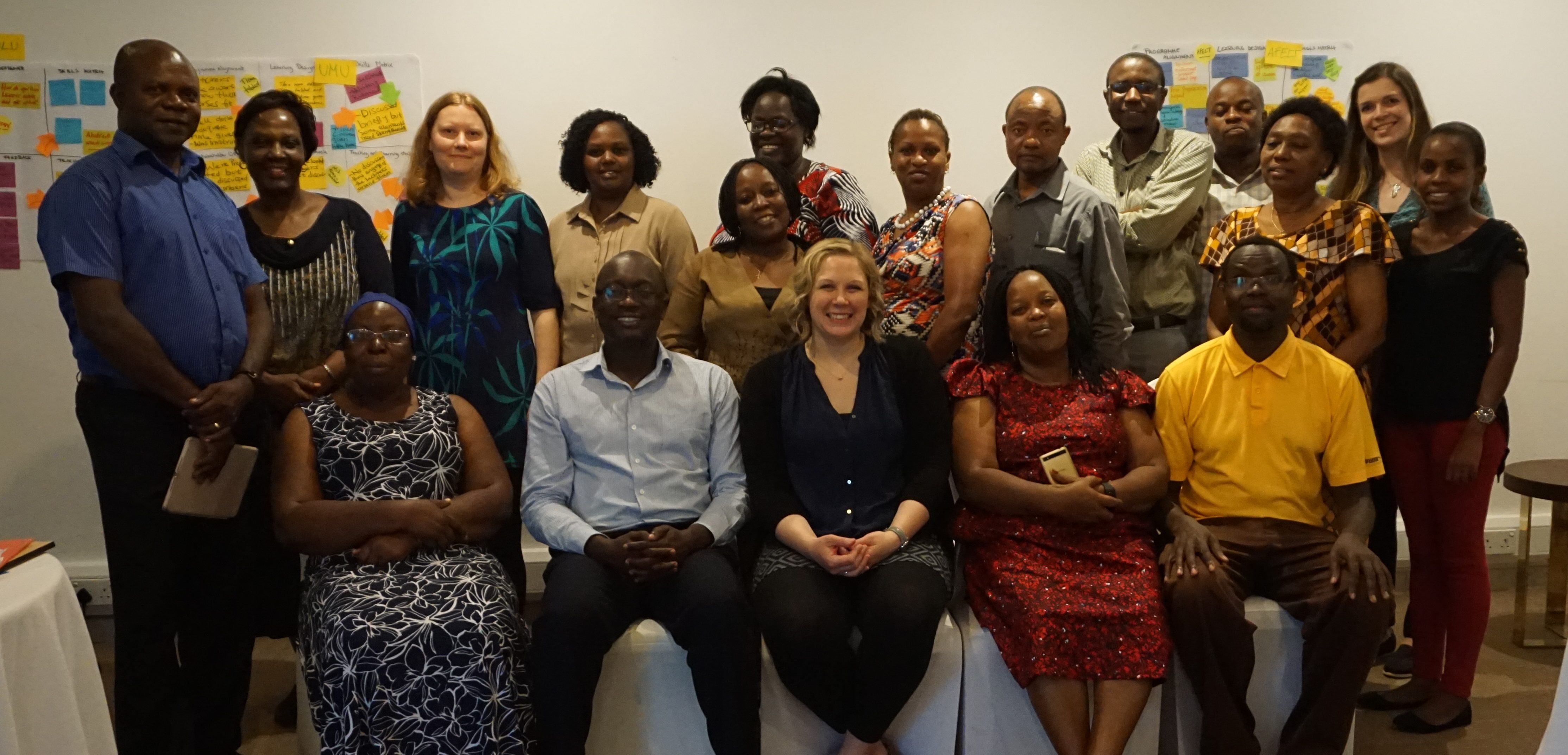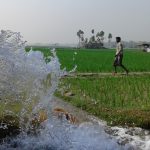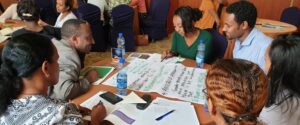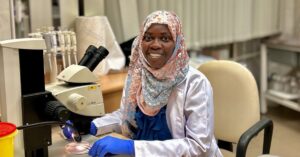
Gender responsive programming: the global gender gap in the context of East African higher education
Jennifer Chapin reflects on what being gender responsive means for the TESCEA project in working with higher education to improve employability in Tanzania and Uganda.
In March, the project leadership for the Transforming Employability for Social Change in East Africa project (TESCEA) all met over eight days in Dar es Salaam to set the project strategy as we move into our second year. With representation from Uganda, Tanzania, Kenya and the UK, one big aim of the meeting was to reflect on how we integrated gender into the project and how we could do it better and more systematically.
What came out of discussions was our agreement that gender responsiveness should be integral to the project and not just an add-on or tick-box exercise. But what was interesting was how much time we spent reminding ourselves of the end goal and debating the ways of getting there. It was clear pretty quickly that when we talk about gender it is personal. All of us have experiences, anecdotes and stories about how our gender has impacted us, positively or negatively. So, when we talk about men’s and women’s roles it makes sense that it is emotional; we are talking about ourselves and it is always tough to stay neutral when a topic hits so close to home.
One subject that felt particularly close to home was the idea that ‘gender is not only about women.’ Of course, we all know this to be true – gender is a complex term and refers to many things, certainly not women only. And yet so often when we talk about gender, we refer only to women’s issues. It made me wonder why this is; why do we so often conflate gender with women?
It is almost certainly because the gender gap globally disproportionately affects women instead of men. The 2018 Global Gender Gap Report reveals a 32% gender gap globally, with women negatively affected in almost all countries. [1]
The gender gap in Uganda and Tanzania
In TESCEA’s focus countries of Uganda and Tanzania, we see this gap in action. Although Uganda ranks 43rd out of 149 countries globally in the gender gap index, when it comes to educational attainment, it ranks 126th overall, and two men for every one woman will graduate with a university degree. Women hold 41% of professional and technical jobs, but far fewer advance to leadership roles and it is rare to find a firm with a woman in a top management role.[2]
Likewise, Tanzania ranks 71st on a global scale, with their score due largely to gaps in educational attainment (where it ranks 124th) and economic participation and opportunity (it ranks 72nd). Only 2.7% of women enrol in university (compared to 5.2% for men) and a startling 0.16% of firms have a female top manager.[3]
What we do know is that increasing educational attainment for both women and men over the past 50 years has accounted for 50% of economic growth in OECD countries.[4] At the same time, when women have the opportunity to progress to professional and leadership roles, it is good for business. McKinsey found that organizations that have three or more women in senior management roles perform better overall.[5]
While we can parse these figures and seek to explain based on social, cultural or historical factors, it is hard to argue that there shouldn’t be a focus on being gender responsive in a project working with both universities and employers. If we aren’t responsive to the needs of women – who experience more of the negative impacts of the inequalities – then we are doing our project a disservice by not factoring in an impacting variable. This doesn’t mean that we shouldn’t have both women and men working to address this challenge. In fact, when men are partners in finding solutions to inequalities (by viewing solutions as beneficial to everyone) then those solutions tend to have a much higher success rate.[6]
We therefore, as the leads of the TESCEA project, determined that we have to ensure we are gender responsive and sensitive in all areas of the project; however, given the country and university contexts, it is also clear that we need to place particular emphasis on support to women to help mitigate the country-level university and employer gender gaps.
A vision for gender in TESCEA
After some brainstorming and discussion, we agreed what our vision of gender would look like for the remaining two and a half years of the project:
- All redesigned courses will have clear evidence of gender responsiveness
- The implementers and the instructors will demonstrate evidence of being gender responsive
- The university frameworks will be revised to support and facilitate gender responsiveness
- Students on the selected courses will be more gender aware and responsive
- We will communicate clearly to our stakeholders and to employers our commitment to gender responsiveness
In line with this vision, we have an ambitious schedule of activities over the next year, to integrate gender across all areas of the project. One of the first things we will do is hold a Training of Trainers using elements of INASP’s Gender Mainstreaming in Higher Education Toolkit for Gender Leads from each of our four universities in Tanzania and Uganda, with the aim of supporting with capacity development in providing gender sensitization on campus. INASP and AFELT will also work closely together on the integration of gender responsive pedagogy, ensuring that it is an integral part of the course redesign methodology and that teaching staff are supported in being gender responsive with teaching strategies and managing classes.
“I will be happy when I walk out of this room today, because gender responsiveness is now at the heart of TESCEA.” – Damary Sikalieh, AFELT
To me, TESCEA is not only about redesigning curricula to promote critical thinking and problem-solving skills in a gender-responsive way, but it is also about working with employers to better prepare graduates for employment while also ensuring they are well-rounded citizens, committed to the public good. This is why we, as the TESCEA project leadership, all agreed that gender responsiveness has such an important part to play in the project; well-rounded citizens who are committed to the public good will also one day be leaders in their communities, addressing inequalities and building a more equitable future.
[1] www3.weforum.org/docs/WEF_GGGR_2018.pdf
[2] www3.weforum.org/docs/WEF_GGGR_2018.pdf (pages 279-280)
[3] www3.weforum.org/docs/WEF_GGGR_2018.pdf (pages 267-268)
[4] www.oecd.org/employment/50423364.pdf (page 19)
[5] www.empowerwomen.org/-/media/files/un%20women/empowerwomen/resources/hlp%20briefs/unhlp%20full%20report.pdf?la=en
[6] www.icrw.org/wp-content/uploads/2016/10/What-Men-Have-to-Do-With-It.pdf (page 52)
***
Transforming Employability for Social Change in East Africa (TESCEA) is helping young people in Tanzania and Uganda to use their skills and ideas to tackle social and economic problems. With partners in Tanzania, Uganda and Kenya, TESCEA supports universities, industries, communities and government to work together to create an improved learning experience for students – both women and men. This improved learning experience fosters the development of critical thinking and problem-solving skills, and allows for practical learning beyond the classroom that improves a graduate’s employability.
The TESCEA partnership is led by INASP (UK), working with Mzumbe University (Tanzania), University of Dodoma (Tanzania), Gulu University (Uganda), Uganda Martyrs University (Uganda), Association for Faculty Enrichment in Learning and Teaching (Kenya), LIWA Programme Trust (Kenya) and Ashoka East Africa (Kenya).
TESCEA is funded by the UK’s Department for International Development (DFID) as part of DFID’s SPHEIR (Strategic Partnerships for Higher Education Innovation and Reform) programme to support higher education transformation in focus countries in Sub-Saharan Africa, Asia and the Middle East.
To learn more about TESCEA, click here. To learn more about INASP’s Gender Responsive Pedagogy in Higher Education Framework, click here.

 Previous Post
Previous Post Next Post
Next Post


